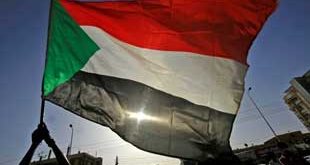
By Flavia Nassaka
Joseph Kanyike tested positive for HIV in 2009. In 2011, the 42-year old was diagnosed with Kaposi’s sarcoma. This is a viral cancer that causes wounds on the skin and inside the body which, in most cases, are impossible to cure. Kanyike’s wound is at the back of the upper neck. It is extremely painful and is the reason he ended up at the Uganda Cancer Institute.
Kanyike was – in addition to Antiretroviral (ARV) drugs–started on a six month dose of drugs. But he says taking the medicine was so tough that he failed to complete the dose.
“At some point, death could no longer scare me but whenever I thought about the pain. I would get scared. At times it would get so severe that I collapsed,”he says.
Whenever he asked about the pain, the doctors told him there was nothing they could do about it.That is when a friend told him about Hospice Africa Uganda, an organization which specializes in relieving pain among patients. It does not treat the disease but gives medicine and other home-based support to enable the patient live a reasonably improved life.

“Here doctors keep checking on me,” says Kanyike about Hospice, “They do everything to ensure that the pain reduces. I used to experience so much pain in the neck area but for now at least I can bear it”.
Benedict Niwagaba, a palliative care professional, says pain management is an important part of what he calls “hospice and palliative care”. The two types of Medicare are often thought of as one and the same thing, even by medical professionals.This is partly because palliative care in Uganda is not yet attached to hospitals as it is in some developed countries.
Both seek to ease pain in people suffering from terminal illnesses such as cancer and HIV.But, according to Harriet Kebirungi, a trainer at the Palliative Care Association of Uganda (PCAU), hospice involves easing pain in patients who have a short time to live and have ceased to receive treatment for their underlying disease. Hospice offers them comfort. On the other hand, palliative care can be considered at anytime during the course of the illness even when a patient is still on treatment for the disease.
“All hospice is palliative care,” says Kebirungi, “yet not all palliative care is hospice.”
World Health Organization figures show about 18 million people mainly in developing countries died in unnecessary pain in 2012. In 2014, health officials from 194 countries met at the United Nations and pledged to make palliative care a major priority. This was the first time for the specialty to be recognized following a resolution passed by the World Health Organisation (WHO).
In Kampala, Hospice started operations in 1993 and is located in Makindye. It has branches in Hoima and Mbarara.
There are other facilities, like Kawempe Homecare in Kampala which is a private facility offering palliative care to cancer, tuberculosis, and HIV patients. When The Independent visited the facility, it had 1819 patients enrolled.
Holistic care
Palliative care professionals like Niwagaba offer holistic care to patients by managing symptoms such as vomiting and pain,and even hygiene. They may sort out social and psychological issues in addition to finding relief for spiritual suffering and emotional distress throughout the course of the illness.
“We tell patients to focus on the present because for most of them, the past is complicated and the future unknown,” says Niwagaba. The idea is to help patients live as meaningful a life as is possible in a situation where there is no hope of recovering from a painful disease.
Dr. Samuel Guma, the Executive Director of Kawempe Homecare says palliative care is increasingly becoming a necessity and practitioners are improving the services offered. At the facility, he says, they recently incorporated a component of legal service to their package.
“Many patients express fears during counseling sessions about what will happen to their property or kids,” says Guma, adding that since “psychological problems can make physical pain worse. We have now resolved to get them legal advisors.”
Niwagaba says, as palliative care professionals, they need not focus on how a patient is responding to pain relievers and medicines for symptom control but on how they respond to life with such bad news.
“What is important is for us professionals is to deal with them with utmost empathy. We must show that we understand what they are going through. This obviously needs more time with them”, he says.
The treatment Niwagaba says helps patients come to terms with their predicament. Even those who have a short time to live engage in every day chores instead confining themselves to their death beds.
What it means being on palliative care
On Sept. 03, the Independent visited Jane Namulondo, a cancer patient on palliative care. The cancer has made her breast swell to the point of bursting. The skin is peeling off and there is a constant discharge. Several tumors were protruding.
Despite using pain killers – Brufen and Amitriptyline, the 39 year old breast cancer patient still experiences pain. At times when it worsens, the usual painkillers are put on hold, for a stronger narcotic called liquid oral morphine.
Apart from pain, she suffers other equally discomforting symptoms.
“When the breast swells beyond this, the chest becomes too heavy that I can’t even work. I also get discharges with a bad odor. All these can come abruptly, yet the doctor or medicine may not be available at the moment”.
Oral morphine belongs to a class of Opioids – strong painkillers used to relieve severe pain. Use of the drug, especially by untrained persons, carries a risk of causing serious injury or death.
WHO considers morphine the highest standard for pain relief. In 2013, HAU entered a Public Private Partnership with the government to manufacture liquid oral morphine for use in pain management so that the drug can be available for all those who need it at a free cost. After manufacture at the Makindye based HAU offices, the government National Medical Stories (NMS) distributes the drug to public health facilities and the Joint Medical Stores distributes it to accredited private health facilities.
At HAU, they are currently manufacturing two strengths of the drug mainly – the green liquid oral morphine which is the weakest and the red one which is stronger. Another strength; the blue, is manufactured only in case of emergency.
The different levels of strength are important because, according to HAU’s Clifford Ochan, morphine is mixed based on the level of pain unlike other drugs with standard doses. When the pain is low, low doses are administered and when pain is high, higher doses are administered. Sometimes patients are weaned off to the usual pain killers such as brufen.
HAU is the only licensed institution to manufacture morphine in Uganda so far. The institution receives 30kgs of pure morphine powder every year. This appears to be low since, in some instances, accredited receiving centers like Kawempe Home Care run out of the drug.
Dr. Jacinto Amandua, the Commissioner of Clinical Services at the Ministry of Health says HAU is the only authorized producer because there is a fear of addiction and misuse if the drug is not rigidly controlled.
“That’s why they have a criterion that all accredited health centers must have a prescriber and good storage such that it doesn’t land in wrong hands,” he says.
New regulations
Amandua told The Independent that the Ministry of Health is in the process of finalizing the National Palliative Care Policy which will enhance provision of the services in the country to address some of the concerns.
According to Ochan, good palliative care is not just about policies and the government. It is also about training personnel to administer the care. Currently there are no institutions offering degrees in palliative care. The only programmes in the field are a two year diploma in clinical palliative care, a 6-weeks rapid prescriber’s course and periodic trainings for trainers.
Kebirungi says by principal, a person on palliative careis supposed to be able to access a doctor, counselor, food or a religious leader whenever they want them. The idea is to allow a patient live comfortably. But in Uganda currently this is not possible because there are only a few medical workers tasked with working on thousands of patients. According to PCAU statistics, about 180,000 patients need palliative care services. Even those who have access may not get all the services they need.
Palliative care is also very costly. At Hospice Africa Uganda, the pioneer palliative care center in the country, an average Shs85,000 was by late 2015 spent on each patient per week.
Part of the cost is because, since they do not offer in patient services, medical workers treat some patients by visiting their homes which is referred to as “home care”.
Others patients are visited in the hospitals where they are admitted for terminal illness treatment. Only patients who are strong are received as outpatients at the center.
By September 2015, Hospice Uganda had about 2000 patients enrolled.
As a result of the high cost, HAU depends on donors to fund its activities.
Still, Ochan says they have reduced some of their outreaches and home cares because they can no longer afford them, especially after some donors reduced funding.
 The Independent Uganda: You get the Truth we Pay the Price
The Independent Uganda: You get the Truth we Pay the Price


